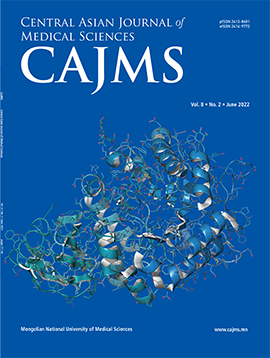A Risk Assessment of Gastric Cancer and Precancerous Condition Using Serum Pepsinogen and H. Pylori Antibody Test
DOI:
https://doi.org/10.24079/cajms.2023.03.003Keywords:
Biological marker, Cancer screening, Atrophic gastritis, Screening test, Stomach neoplasmAbstract
Objectives: We aimed to determine serum PGs (serum pepsinogens) and H. Pylori IgG in atrophic gastritis and gastric cancer patients and evaluate the gastric cancer risk.
Method: We enrolled 40 gastric cancer patients, 40 chronic atrophic gastritis patients and 40 healthy control subjects. Serum PGI, PGII, and H. pylori IgG levels were measured by ELISA. The PGI to PGII ratio was calculated.
Results: The mean age of the subjects was 60±10.9 years, We found that 52.6% (n=60) were male. H. Pylori IgG was positive in 67 subjects. The serum PGI and PGR levels were significantly decreased in gastric cancer and atrophic gastritis groups compared to the healthy control. According to classification ABC (D), group D had higher proportion of atrophic gastritis cases, group C had higher proportion of gastric cancer cases than others. Additionally, we evaluated all subjects by giving one point to each of the age ≤40, positive family history of gastric cancer, positive previous gastric disease history, PGI ≤75.07 ng/ml, PGR ≤6.25, or two point to each of PGI ≤35.25 ng/ml, and PGR ≤5.27, with score ranging between 0-7. As score increased, the risk of atrophic gastritis or gastric cancer increased.
Conclusion: A combination of methods involving PGs and other risk factors may predict the probability of gastric cancer and could identify individuals who may need upper endoscopy.
Downloads
395
Downloads
Published
How to Cite
Issue
Section
License
Copyright (c) 2023 Mongolian National University of Medical Sciences

This work is licensed under a Creative Commons Attribution-NonCommercial 4.0 International License.




